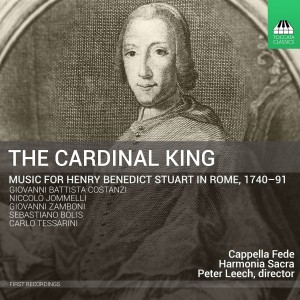BLESSED William SOUTHERNE was born in Ketton, near Darlington, in the County of Durham; he was seminarian in Douai, and after later the College of St. Alban in VALLADOLID, where he was ordained a priest. For fourteen years he worked for the re-conversion of the English, mainly in Northumberland. Condemned for being a priest, he was stripped, hung (sic), drawn and quartered in Newcastle-upon-Tyne, on the 30th of April 1618. Pope John Paul II beatified him, on the 22nd of November 1987.
The Catholic Encyclopedia adds this detail:
He was arrested while saying Mass, and committed by a neighboring justice to Stafford gaol. He was immediately sentenced to death for being a priest and refusing to take the oath of allegiance; he remained in prison for six days after condemnation, no hangman being forthcoming.
Blessed William Southerne served the underground Catholic community for fourteen (14) years! That means 14 years of hiding, walking or riding from safe house to safe house, saying Mass, hearing Confessions, baptizing newborns, always on the run, and finally captured.
The fact that he was mostly in Northumberland makes sense, since it was, during Elizabeth I's reign and well into James I's, a strongly recusant area. According to this history, published by the Diocese of Hexham and Newcastle, the Catholic community did not suffer as much as could be expected after the Gunpowder Plot was discovered and the penal/recusant laws strengthened :
Of the then leading 18 Northumberland families 12 were Catholic, including the Radcliffes at Dilston and their relatives the Widdringtons of Cartington. Both incurred considerable expense improving their properties during these years, Francis Radcliffe audaciously providing even a separate (and therefore public) chapel in 1615/6. It is said that half of the Northumbrian recusants during James' reign lived in this southern part of Tynedale.
Though King James must take some responsibility for the on‐going persecution of Catholics, he continued to stop short of the death penalty, if only to further his plans for marriage alliances with the two great Catholic countries of Spain and France. When in 1618 the priest William Southerne who had been working in Newcastle from a room (which doubled up as a chapel) on the upper floor of a house on the quayside was tried and summarily executed, it was done on the orders of the anti‐ Catholic Lord Sheffield, president of the council of the North whom the king swiftly dismissed from this high office.
According to his DNB entry, Lord Edmund Sheffield did indeed James I's displeasure, who was in the midst of negotiations with Spain:
On 21 April 1593 Sheffield was elected a knight of the Garter (Doyle). About 1594 he was a candidate for the wardenship of the west marches, and in 1595 he applied to Cecil for the post of lord president of the north. Suspicions of his religion caused by the fact that he had married a catholic were said to be the cause of his ill-success (Cal. State Papers, Dom. 1581–90 p. 145, 1595–7 p. 140, 1580–1625 p. 365). Yet he seems to have been suspected very unjustly, and a letter from the north in 1599 praises his zeal in apprehending priests. ‘He will undertake any service against the papists, for God hath called him to a very zealous profession of religion’ (Cartwright, Chapters of Yorkshire History, p. 174; cf. Laughton, i. 66). On 13 Jan. 1598–9 Sheffield was appointed governor of Brill (Collins, Sidney Papers, ii. 71–80; Egerton Papers, p. 270).
Under James I he obtained the object of his ambition, and became lord-lieutenant of Yorkshire (1 Aug. 1603) and president of the council of the north (19 Sept. 1603). These two posts he held till 1619, when he resigned his presidency to Lord Scrope. This resignation was probably not a voluntary one, for Sheffield having executed a catholic priest without the king's leave, James promised the Spanish ambassador that he should be removed (Doyle, ii. 541; Gardiner, History of England, iii. 137; Court and Times of James I, ii. 136). An accusation of arbitrary conduct was also brought against him, but without result (Cal. State Papers, Dom. 1603–10, pp. 24, 531, 577).
Sheffield's first wife was Ursula Tyrwhitt, daughter of Sir Robert Tyrwhitt of Kettleby, whom the History of Parliament describes as a "lifelong Catholic":
Ursula received a bequest from her father, knowing that he had suffered for the faith while her husband was prosecuting Catholics!
Blessed William Southerne, pray for us!



















